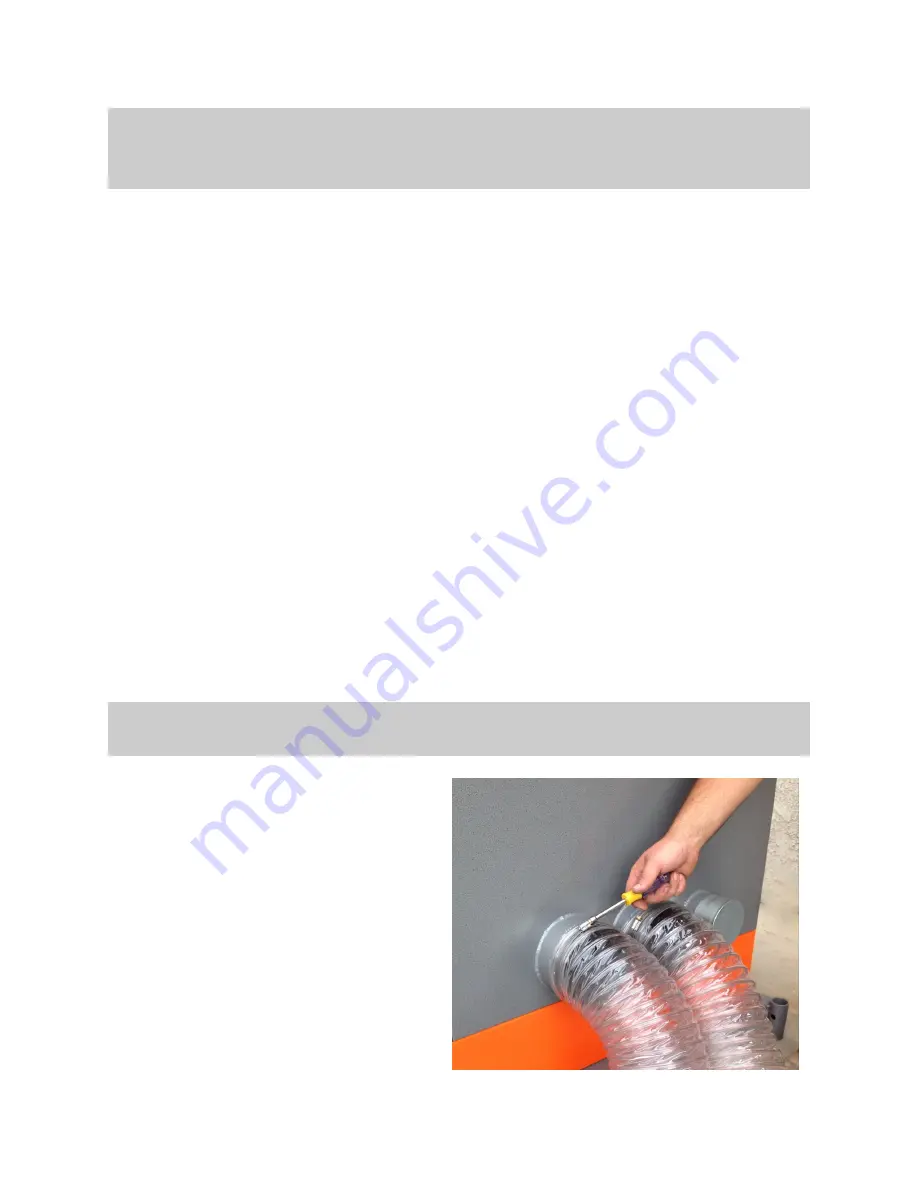
IMPORTANT PRECAUTIONS
It is the owner’s responsibility, to inform all users regarding the operating and
safety precautions of this unit.
1. Be sure that the unit is
disconnected
from the power source prior to any service,
cleaning or maintenance.
2.
Grounding–
Unit must be grounded. Verify that the green wire in the power cable
is properly connected to a secure earth ground.
3.
Power Hook-up
– The unit is designed to be operated from either a single phase or
three phase power source, depending on the model. When an extension cord is
needed, the extension cord must be of the same or larger gauge to prevent loss of
power or overheating of the cable.
4.
Overload Circuit Breaker–
Make sure that the overload circuit breaker is set to
proper amperage, which maybe 15A or 7A, depending on the model.
5.
Static Shock–
Static shock is common in areas with relatively low humidity and is
not an indicator that the unit is performing improperly.
6.
Dry Pick-up–
Do not vacuum toxic, combustible, or other hazardous materials such
as: asbestos, arsenic, barium, beryllium, lead, or pesticides. Do not vacuum weld-
ing fumes, burning cigarettes, ashes, matches or other similar materials.
7.
Never
operate the unit in the presence of flammable vapors, aerosol products or
near the spraying of flammable liquids, i.e. paints and oils.
8.
Do not
operate the unit without the filter tubes in place
.
9.
Lock
option
casters in place when unit is in operation or storage.
10. Dust bucket release handle must be in
upright position
prior to operation of the
unit.
11.
Never
leave the unit unattended while it is powered on.
12.
Do not
put hair, clothing or body parts in front of the unit’s hoses or suction inlets
while the unit is powered “on”.
13. Transport, operate and store the unit on
level surfaces
to ensure the unit will re-
main stationary.
OPERATING INSTRUCTIONS
1.
Power Hook-up–
Electrical power
hook-up must be performed by a li-
censed electrician in accordance with
the applicable electrical codes. Con-
firm that motor rotation is in the direc-
tion of the arrow inscribed on the unit.
2.
Inlet Hose/Duct Installation–
At-
tach the proper diameter hose to the
corresponding suction inlets using con-
ventional hose clamps. Auxiliary inlet
must be covered with cap when not in
use to ensure proper suction. Hoses
and clamps should be checked regular-
ly for adjustments and signs of wear.
5

















